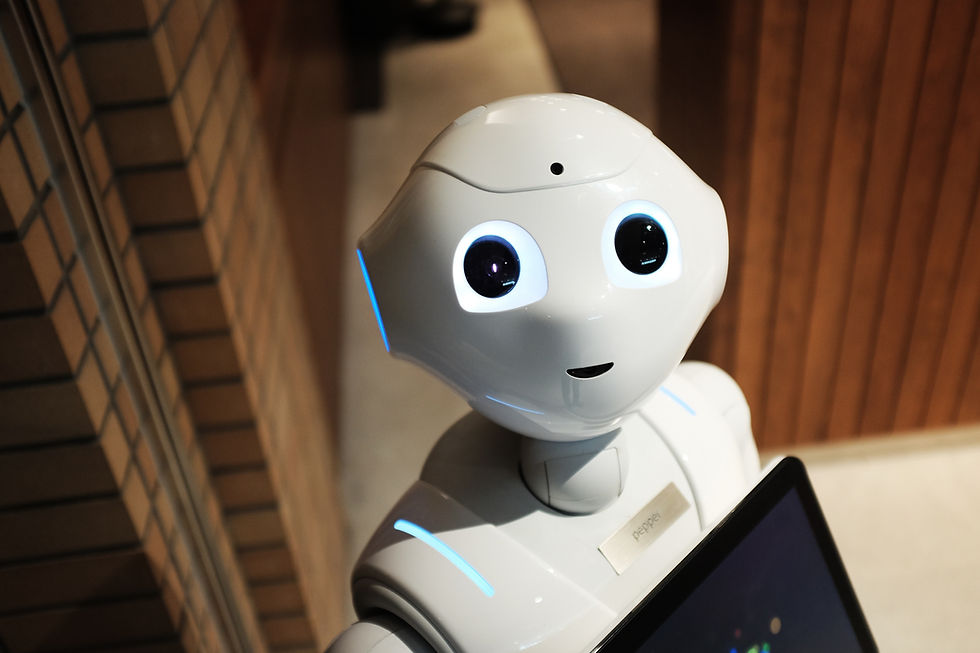To future with Edu-tech in lead
- Thothathri Raman

- Oct 19, 2020
- 5 min read
Dr Jayanthi Ranjan *and Prof Thothathri Raman*

The world as it were is on its wings and the future belongs to leaders who understand technology in its right perspective. The onus of responsibility of preparing future managers of value to the world changing its hue at supersonic speed lies squarely with academic campuses. In a specially written article to assist us in our thought process while we prepare for the XIII International Accreditation Conference due on November 5-7, for three days Prof Jayanthi Ranjan argues passionately for a future where machines cannot and will not replace the human element necessary to produce just such leaders for the technology and knowledge driven world.
Our conference is for hope and not despair or even celebration in a voyeuristic sense of watching the whole world going digital and the quality strategy anchored on getting more technology inside the classroom and into the brain of the learner. Our own thinking is that the human aspect of teaching and learning is far more important than reducing teaching and learning as a transaction equation where AI and BOTs are going to continue to help sustain the virulent commodification of education that started in the seventies in this country and much earlier in the western world.
Educational institutions starting from primary, secondary to higher education are embracing new technological tools pre-pandemic and during pandemic. The new normal is defined in many ways in education.

Todays big technologies for strategic systems will be tomorrow’s just operational systems as has been the way of the world. However there is a word of caution here. What matters more than technology is ideas (and people to support them). There is a prevailing notion that with technology infusion “your teacher maybe a robot” as a way of academic institutions reducing their costs . This vision of lowering instructional costs with Artificial Intelligence AI, however, only appeals if you think of learning as a transaction. May be, learning is relational, iterative, recursive and constructed. This nuanced, complicated and human-centric conception of learning requires the active participation of educators. How do we celebrate technological experimentation in higher ed without succumbing to the belief that the solutions to our challenges will be found in technology? That is the dilemma.

The educational institutions are heavily investing in MOOC, blended learning, AI, VR, AR into the classrooms. The aim is to enable more innovative and engaging teaching methods and learning experiences.
The simplest technology that is going to impact like tsunami is - COMPUTERIZED GRADING. Wait, this is not the normal excel based evaluation that every college has. AI enabled classrooms to check feeling, attitude behavior, involvement, engagement of students, faculty as well as the classroom. (for a moment lets ignore privacy and laws). Computerized grading, in a simple way applies the techniques of machine learning and artificial intelligence to determine statistically the probability that a human grader would give a particular grade to an essay.

Hence using a software program, it starts searching for aspects of writing such as the number of words, spelling, sentence structure, use of punctuation, average length of a word, average length of a sentence, accuracy of quotes against source material. Now many companies have sensed the advantages of it and enhanced it by coupling with Affective computing). Affective computing is the study and development of systems and devices that can recognize, interpret, process, and simulate human affects with an ability to simulate empathy. The machine should interpret the emotional state of humans and adapt its behavior to them, giving an appropriate response for those emotions.

The second one comes to our mind is GAMIFICATION. We all know this as many marketers have been playing games with us to buy their products. Gamification uses the game theory and practices in the development of digital simulations for e-learning. Gamification is based on the theory that students will be more engaged with the learning process and will ultimately achieve greater academic success if learning is based on gaming concepts such as competition, incentives, and goal attainment. Many e-learning games are available today; some of these are targeted for individual learners, but many are intended for teams, and some have options for either individuals or teams
We are also seeing and engaging flipped classrooms. While traditional simulation has been widely used in higher education, through activities such as role-playing, technology-based simulation has been less widely adopted, with the exception of medical education.
Going forward,
INTERNET OF AUTONOMOUS THINGS (AuT), , driven by disruptive technologies such as AI, big data, and the cloud, has become a more exciting term in technological developments; Self-driving vehicles, robots, and UAVs and drones are significant parts of this. Hence in all the lab based learning, such technologies are arriving and replacing the teachers and the very learning process.
We all remember few years ago a beautiful video on “DIGITAL MILLENNIALS”, on 3-5 year kids sharing the branded clothes reviews and online recommendation for going to school each day.
Then comes DIGITAL TWIN. We have, at least, I have a scary feeling on digital twin. A digital twin is a digital replica of a living or non-living physical entity. Digital twin refers to a digital replica of potential and actual physical assets (physical twin), processes, people, places, systems and devices that can be used for various purposes. I am leaving to your imagination on its impact on kids and learning.

Then we know KNOWLEDGE GRAPH. It has huge impact on learning and classroom teaching. Knowledge Graphs help companies create their specific web of knowledge representing their very own domain. As a result, they can seamlessly break down data silos to use information assets in an agile way. Furthermore, it is a cost-efficient solution that does not replace but boosts existing IT systems.so if they are used in Education, too much infusion of technology.

Learning using GESTURE-BASED COMPUTING: Unlike common input devices like a keyboard, mouse, game controller, or voice technology, gesture-based computing typically refers to interfaces where the human body interacts with digital resources without using these input devices. There has been a lot of buzz around the development of gesture-based computing over the years. It’s one of the most lucrative applications lies in education technology. In modern business marketplaces, gesture-based technology is on the rise, allowing effective marketing interactions between brands and consumers.
Also, please watch for BETAVOLTAIC TECHNOLOGY, using nuclear waste to produce electricity — minus the reactor and sans moving parts, instead of using photons from the sun, it uses high-energy electrons emitted from nuclear byproduct.so the classrooms will go green or in other words the learning rooms are betavoltaic. Georgia Tech’s School of Mechanical Engineering is making advances with PIEZOELECTRIC ENERGY — converting mechanical strain from ambient vibrations into electricity. Imagine future learning rooms. you feel comfortable.
Also lots of speculation on learning and understanding Graphene Supercaps, Good-bye Batteries? so the school infrastructure shall undergo a quantum change.


Slot Gacor Hari Ini adalah pilihan terbaik bagi Anda yang ingin meningkatkan peluang kemenangan besar dengan cepat. Slot-slot di situs ini dipilih secara khusus untuk memberikan RTP tinggi, sehingga pemain bisa meraih kemenangan lebih sering dalam waktu singkat. Fitur-fitur seperti putaran bonus, scatter, dan free spin juga meningkatkan peluang mendapatkan jackpot. Dengan memainkan slot gacor yang sedang "panas" hari ini, Anda bisa merasakan pengalaman bermain yang lebih seru dan menguntungkan. Jangan lewatkan kesempatan meraih kemenangan besar dengan mencoba keberuntungan Anda sekarang juga!